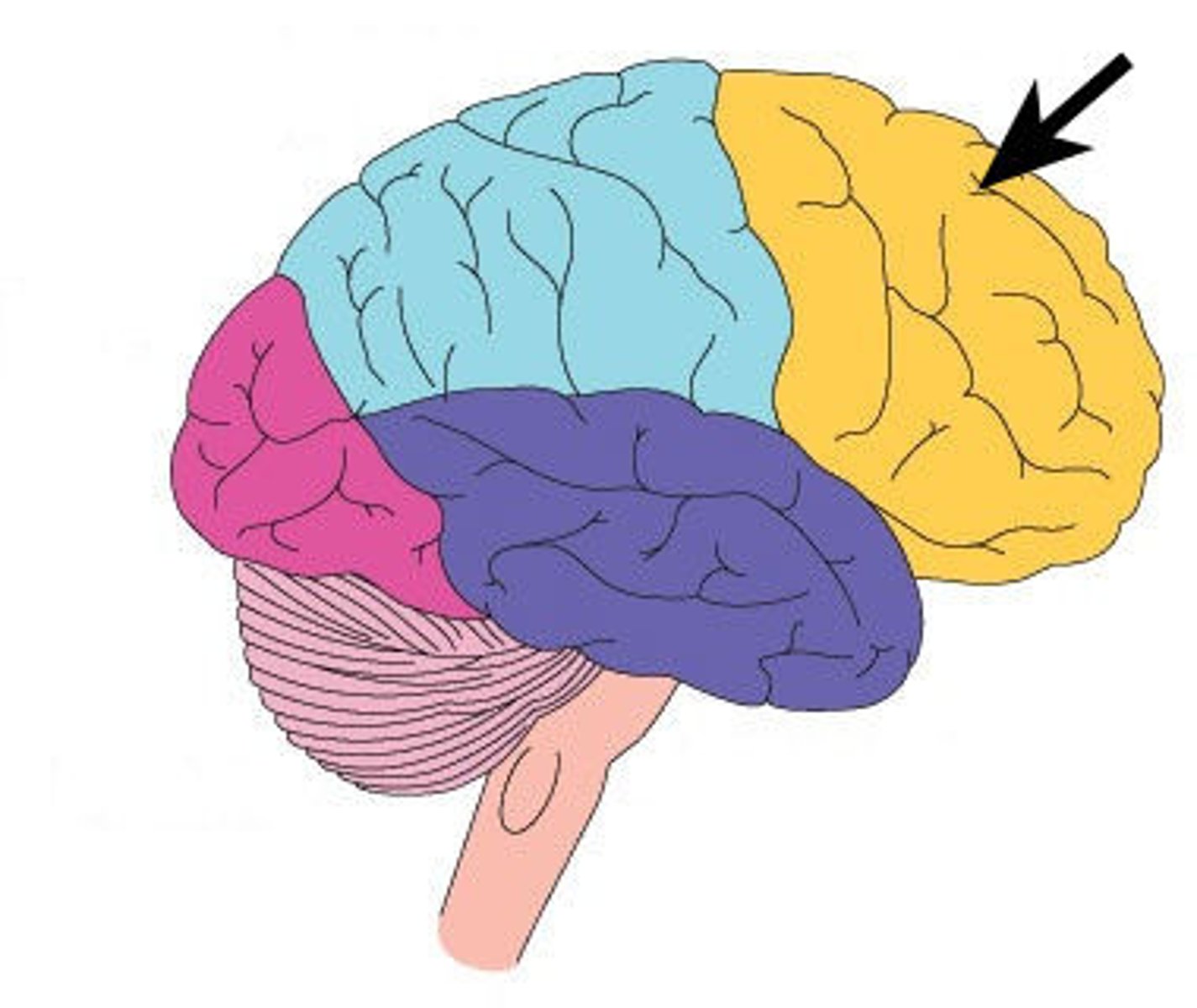Parts of the Brain
1/18
There's no tags or description
Looks like no tags are added yet.
Name | Mastery | Learn | Test | Matching | Spaced |
|---|
No study sessions yet.
19 Terms
Ventricles
There are four interconnected chambers (ventricles) within the brain that produce and store cerebrospinal fluid (CSF). The choroid plexus of each ventricle is what produces the CSF. They are continuous with the spinal canal within the spinal cord and the meninges allowing the CSF to circulate throughout these areas as well.
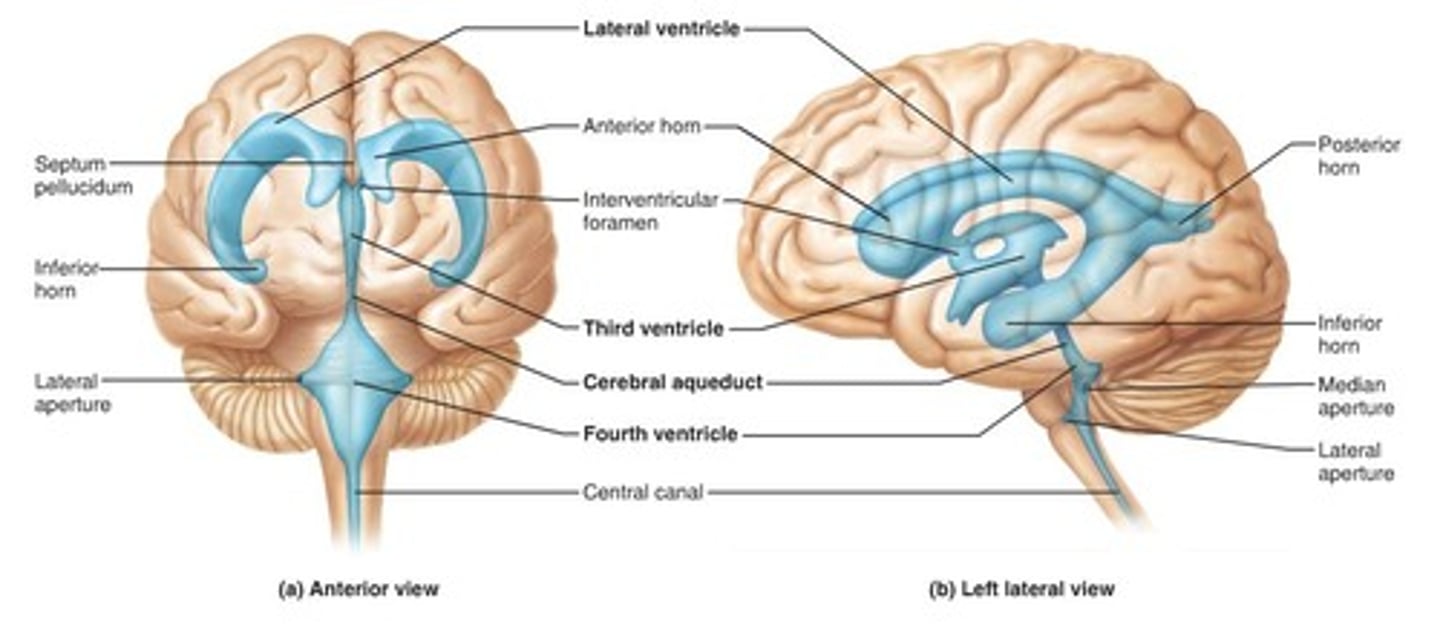
Cingulate Gyrus
This lies immediately above the corpus callosum.
It is an important part of the limbic system which is involved in
processing emotion, learning and memory formation.
It has a great influence on linking motivation to behavioral outcomes.
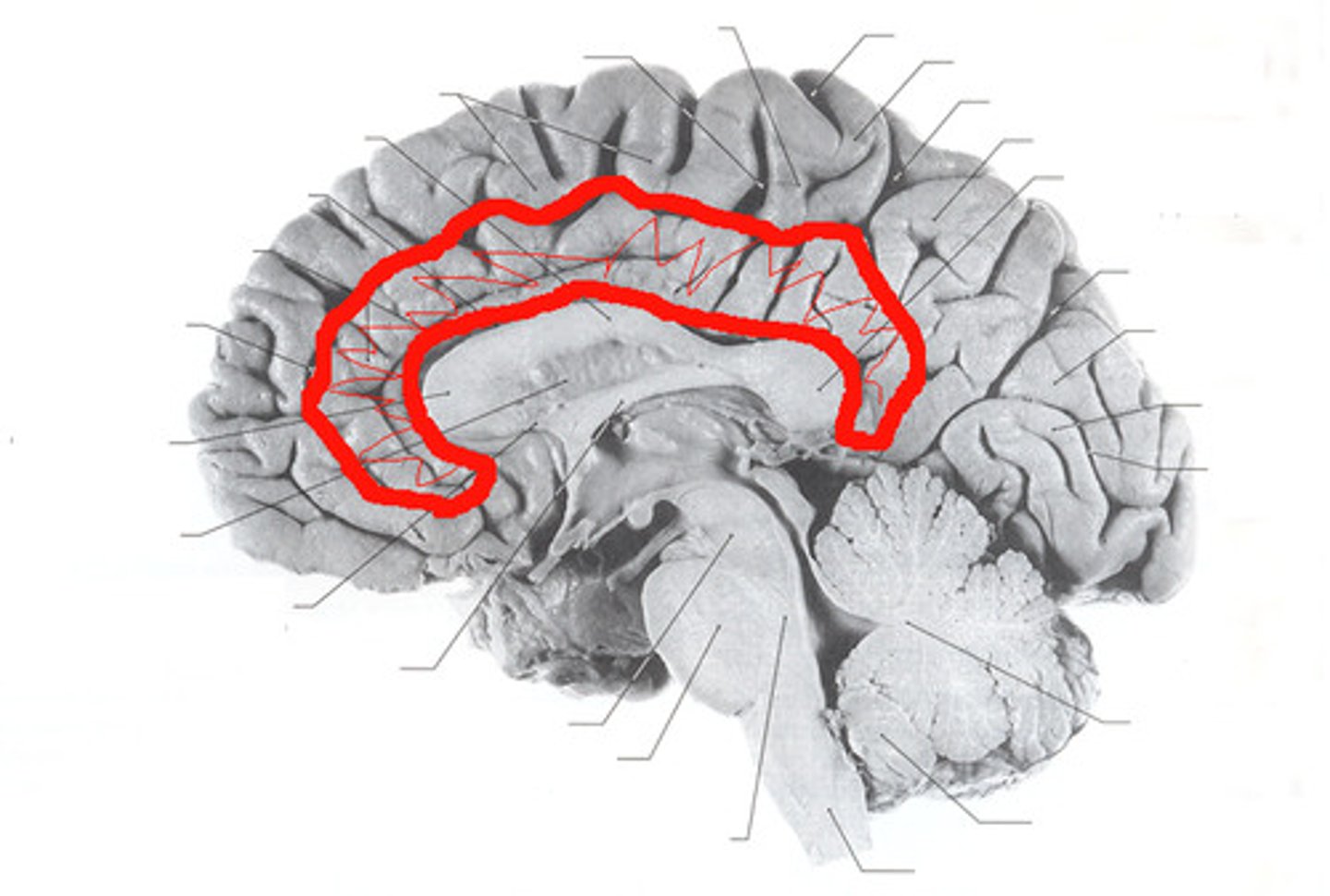
Thalamus
It functions as a bidirectional relay system.
It carries, sorts and processes information between the structures of
the spinal cord, midbrain and the structures of the cerebral cortex.
Every sensory system (except that of olfaction) is represented by a patch of neurons here called a nucleus which sends the
sensory information to the correct part of the brain for processing.
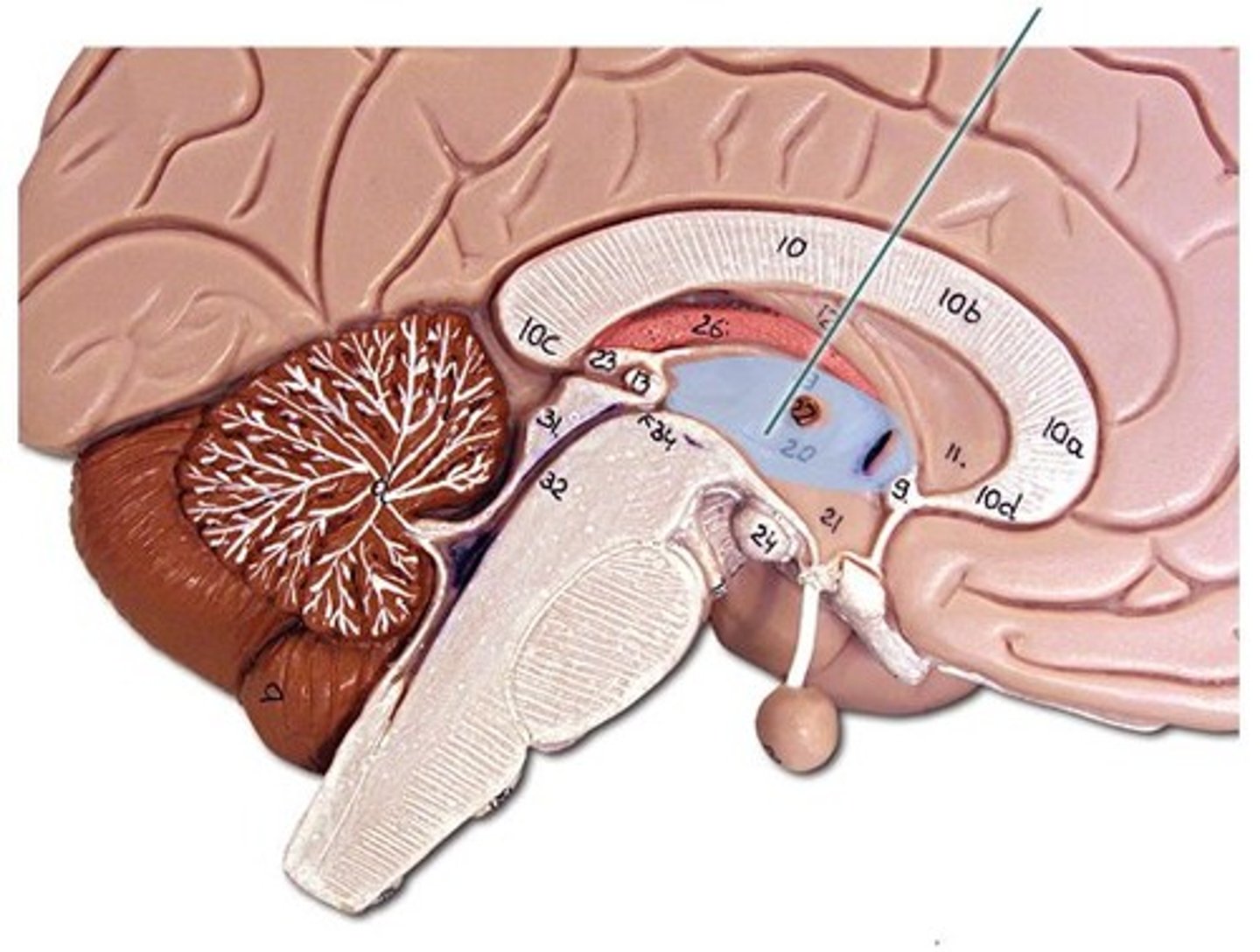
Hypothalamus
It plays an important role in maintaining the internal conditions of the body - homeostasis. It regulates thirst, hunger, blood pressure, body temperature and glandular secretions.
It releases hormones to control the secretions of the pituitary gland. E.g. thyrotropin-releasing hormone (TRH) controls the release of thyroid stimulating hormone (TSH) from the anterior pituitary.
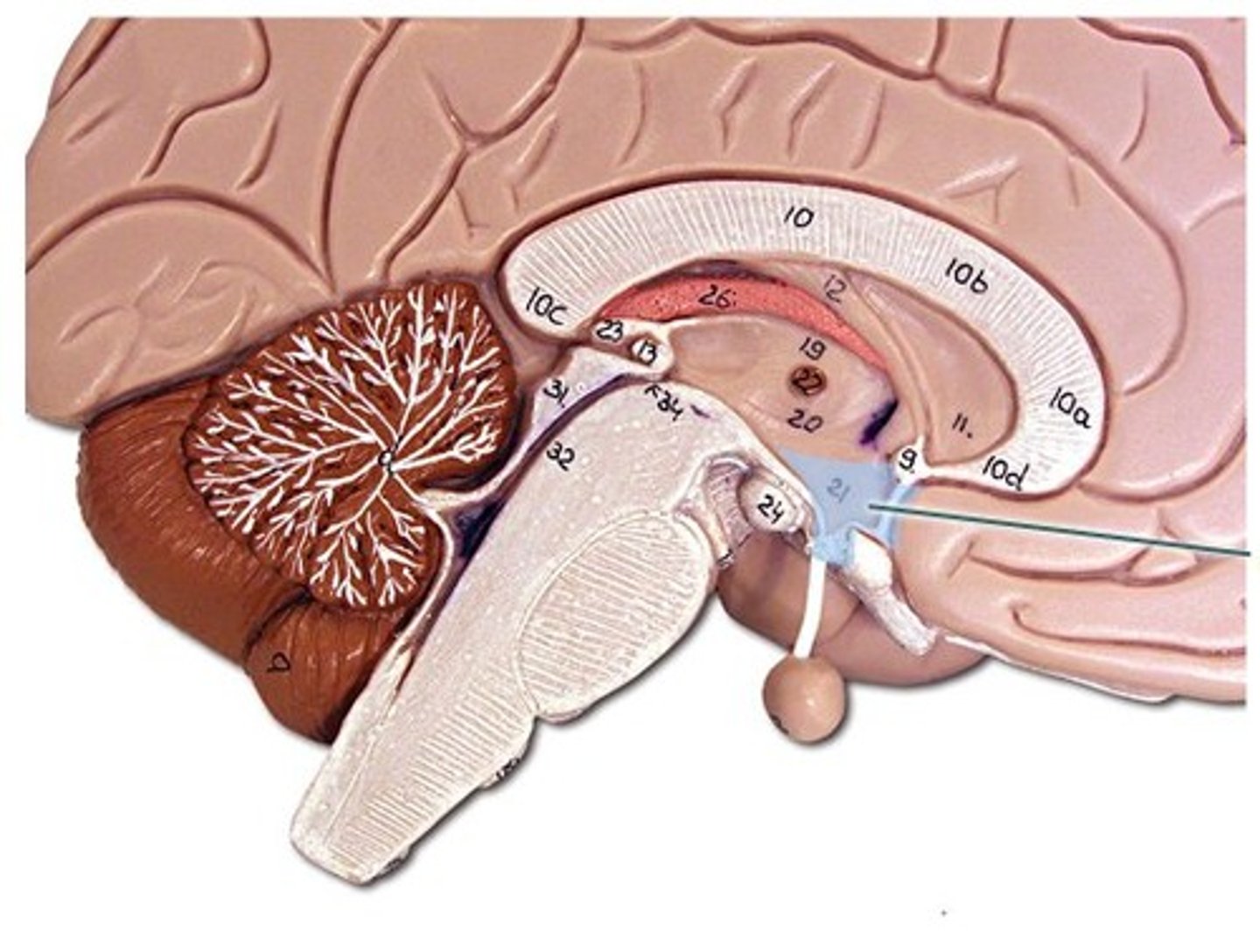
Optic Chiasm
This is the part of the brain where the right and left optic nerves cross.
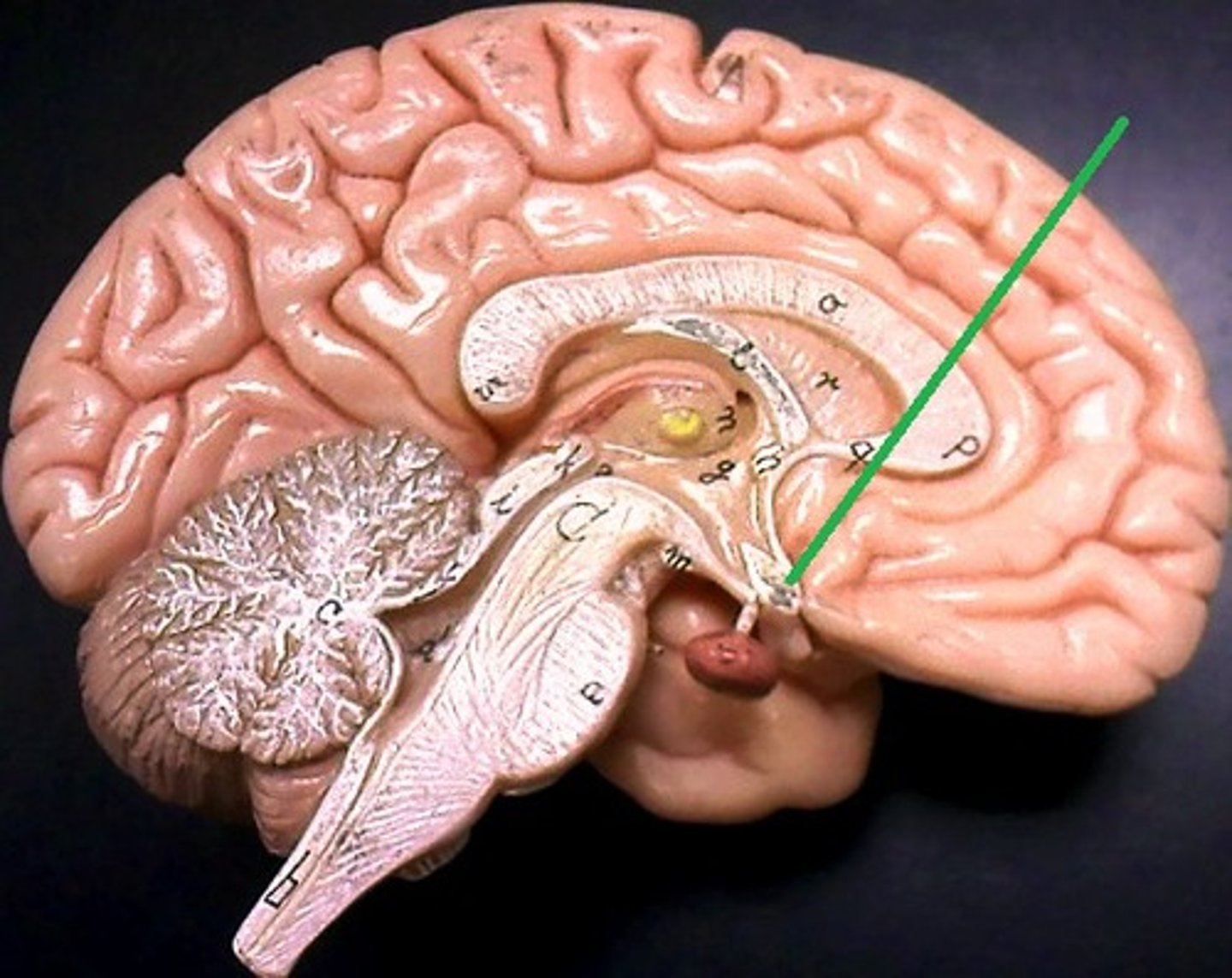
Pituitary Gland
This is called the "master gland" because it secretes nine hormones that have important roles in the body. Another name for this is the hypophysis.
The anterior pituitary secretes these seven hormones: human growth hormone (HGH), thyroid stimulating hormone (TSH), adrenocorticotropic hormone (ACTH), Prolactin (PRL), luteinizing hormone (LH), follicle-stimulating hormone (FSH), melanocyte stimulating hormone (MSH).
The posterior pituitary secretes these two hormones: antidiuretic hormone/vasopressin (ADH) and oxytocin.
Many of these hormones regulate the secretions of other endocrine glands within the body.
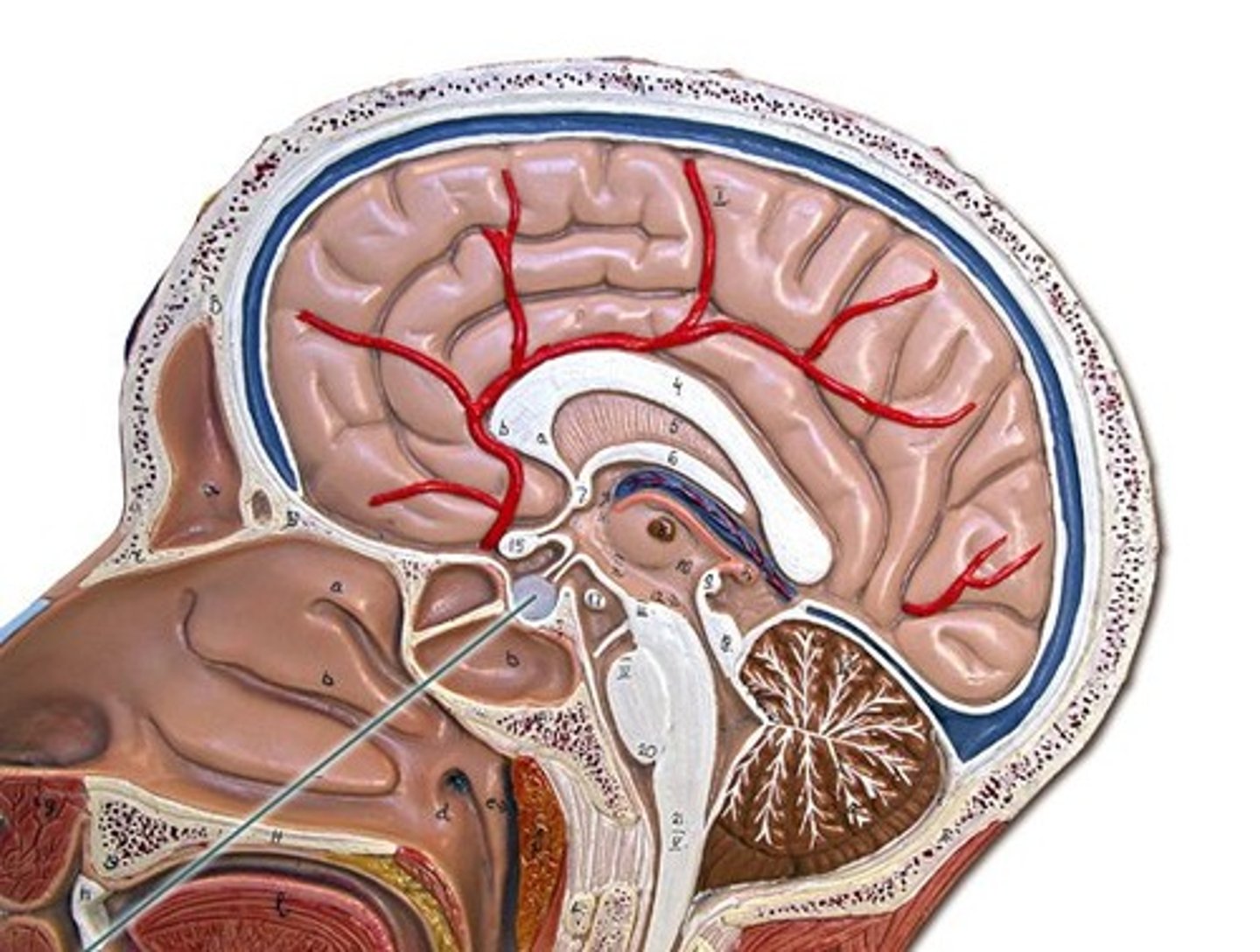
Midbrain
Also called the mesencephalon.
Controls reflex patterns associated with vision and hearing.
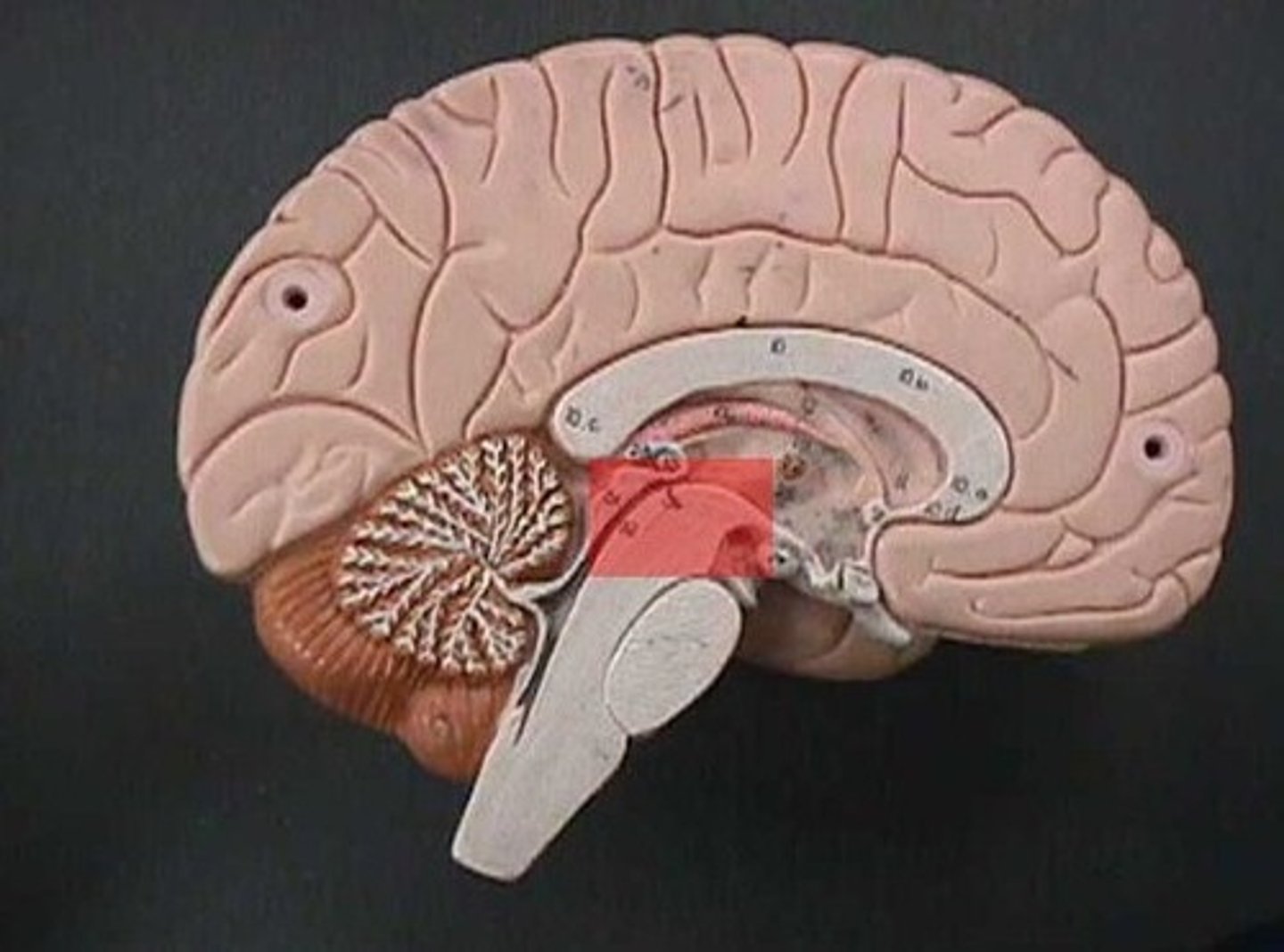
Pons
A relay station between the cerebellum and the cerebral cortex.
Contains 4 (of the 12) cranial nerves that transfer sensory and motor
information to and from the facial region and the brain.
Medulla Oblongata
Controls vital bodily functions like breathing and heartbeat.
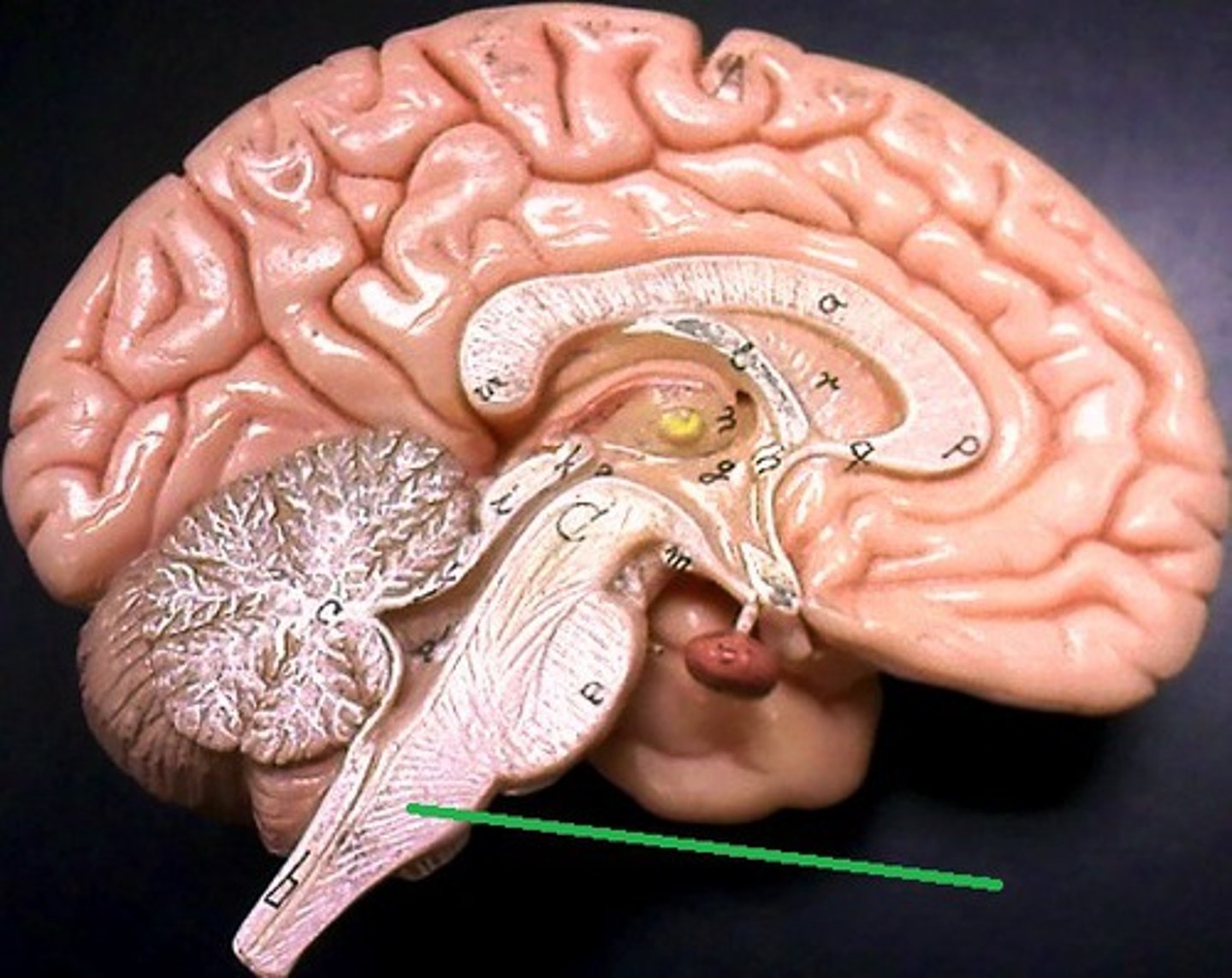
Meninges
This structure is composed of three layers of connective tissue (dura mater, arachnoid mater and pia mater) and the fluid (cerebral spinal fluid) circulating the layers (specifically between the arachnoid and pia mater). They provide protection against physical impacts as well as against infection, hence it is also known as the "blood-brain barrier".
Cerebral Cortex
The outer 3 millimeters of "gray matter" that comprises its surface. Here the neurons are so densely packed that they make up 70% of all the neurons in the nervous system.
This area controls most body functions including consciousness, the sensory processing and motor processing, as well as reasoning and language
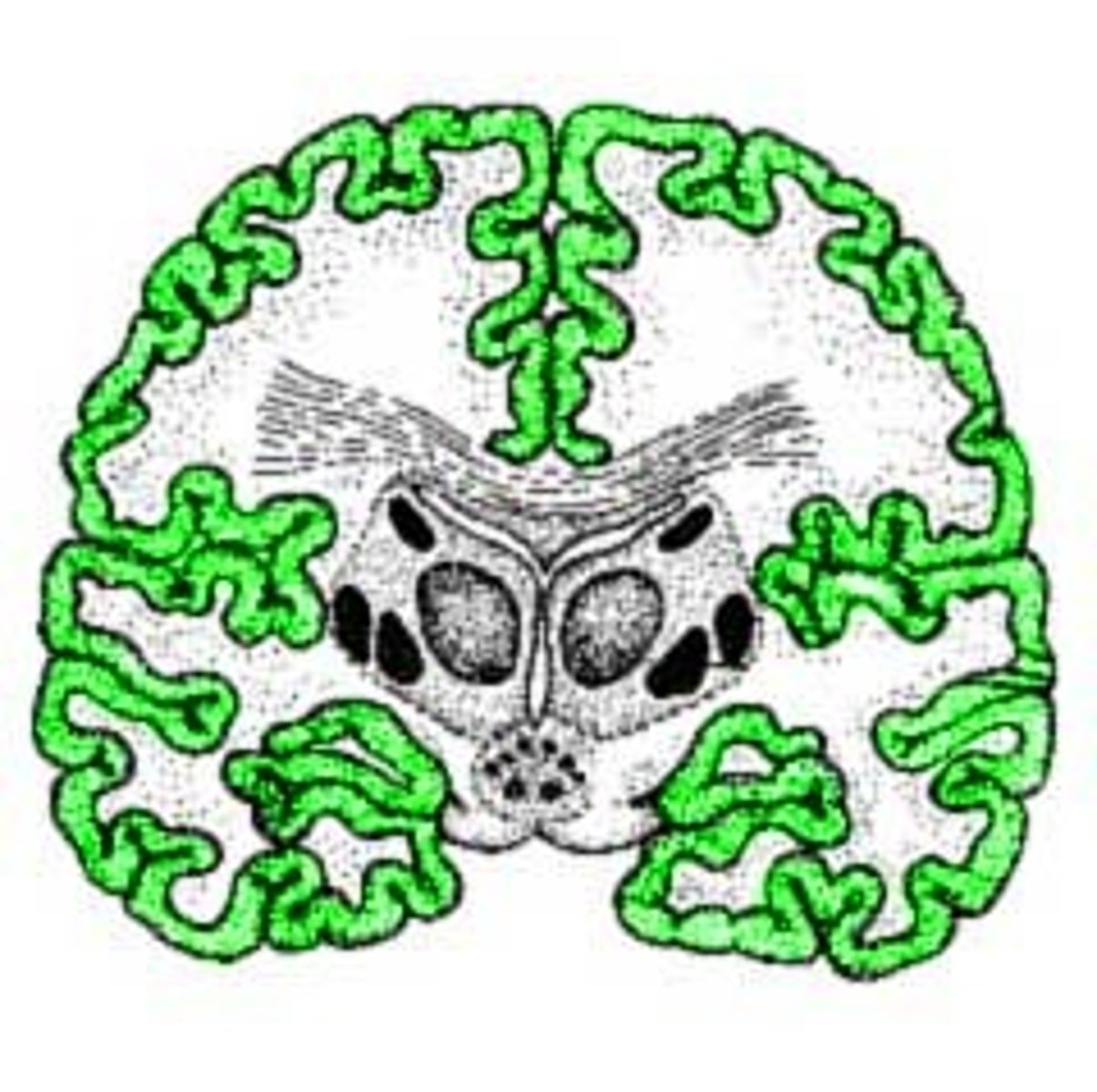
Cerebrum
This is the largest brain structure and accounts for over 2/3rds of the brain mass.
It has two hemispheres connected by the corpus callosum.
Each hemisphere has lobes which have specialized functions.
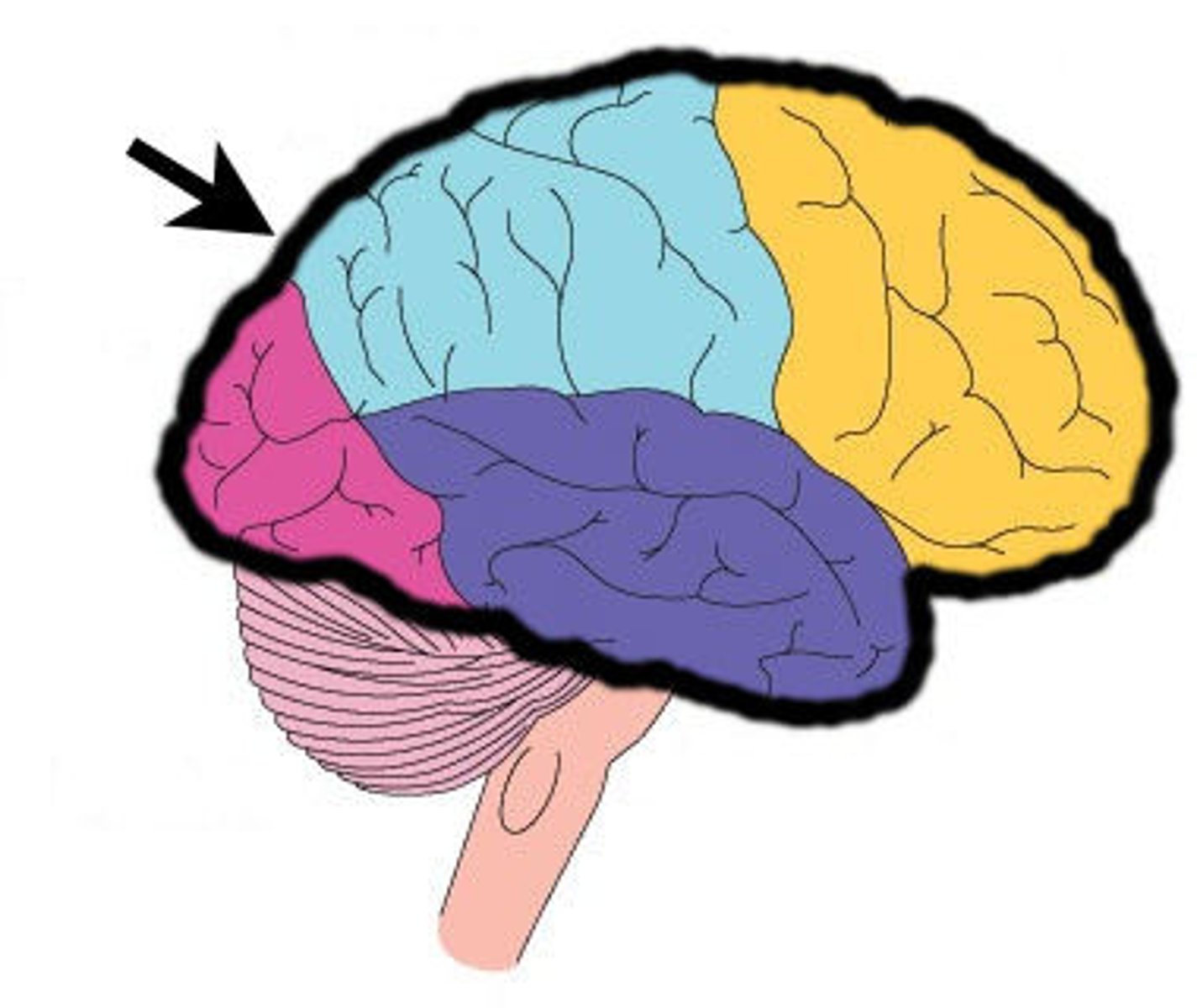
Corpus Callosum
A large band of nerve fibers that connects the right and left hemispheres of the brain to help relay information to both sides.
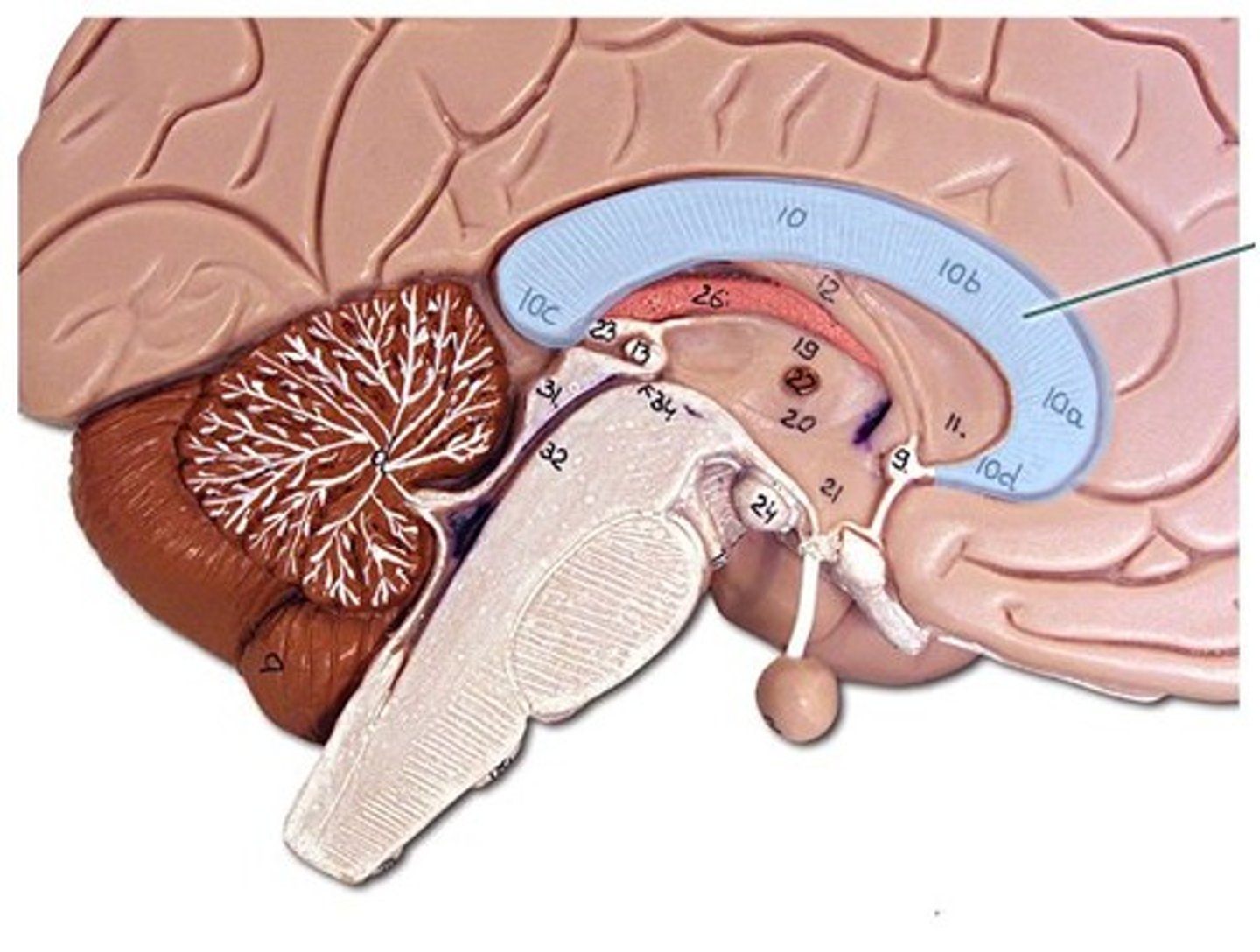
.Pineal Gland
It regulates the body's circadian rhythms (sleep-wake cycles) through the hormone melatonin.
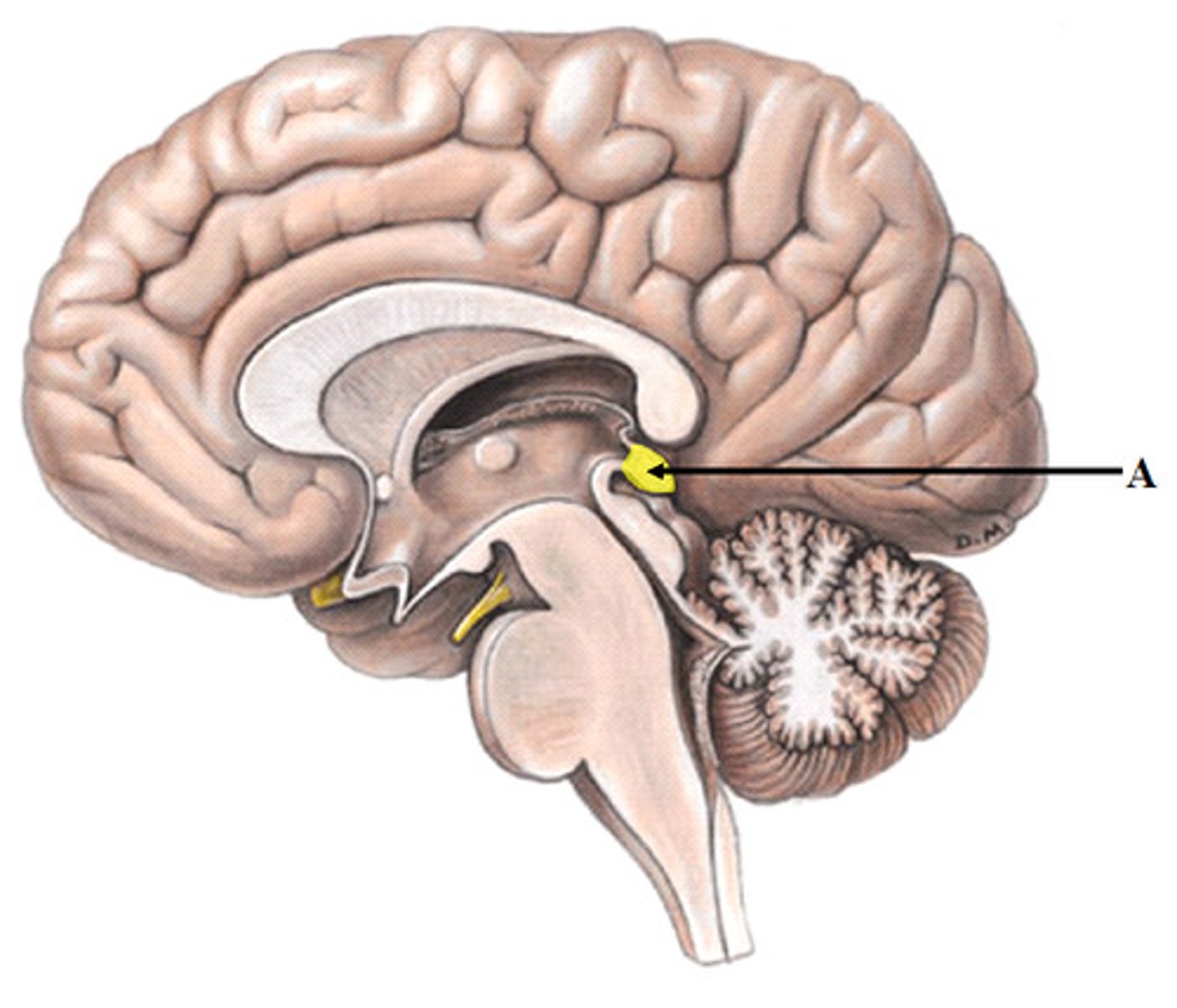
Cerebellum
Like the cerebrum, it has two hemispheres and highly folded surface. Functions to regulate and coordinate movement, maintain posture and balance. Evolutionarily speaking, it is older than the cerebrum.
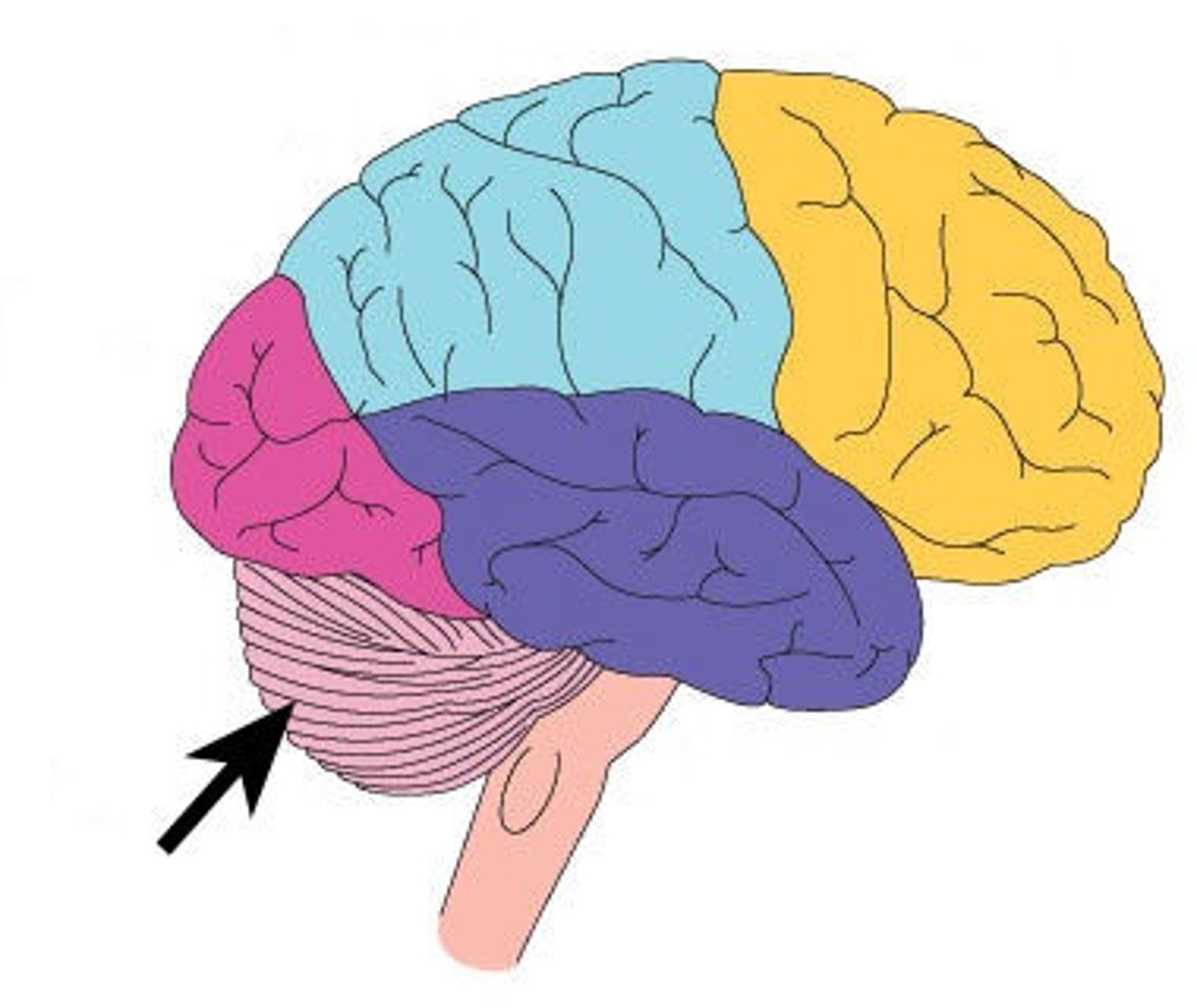
occipital lobe
This lobe receives and processes visual information (light, color, movement) and then sends it to other parts of the brain for further
processing and storage.
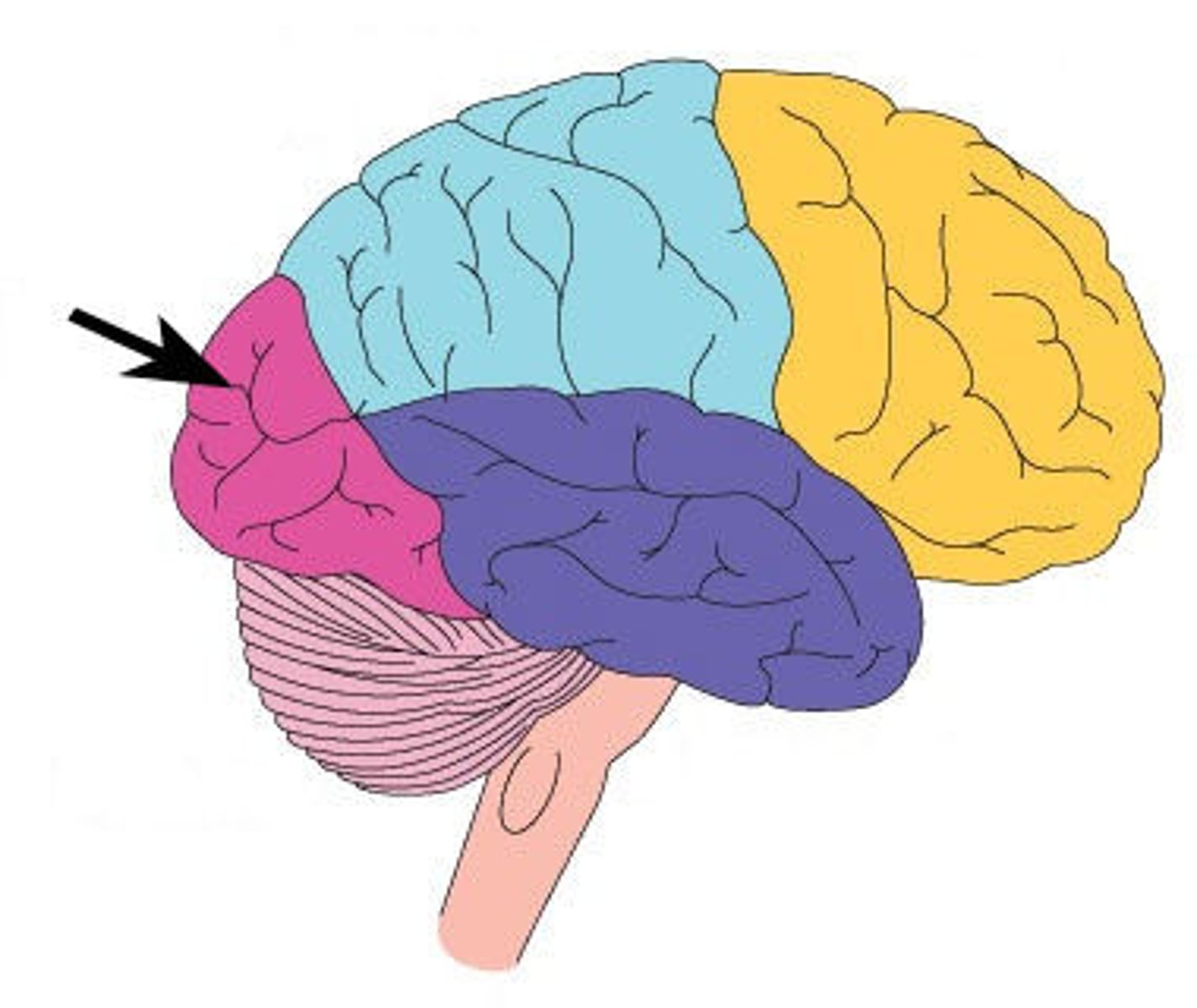
parietal lobe
This lobe receives and processes somatosensory information (pain, pressure and touch) from the body to create a map of the body's position
in space and a map of body parts in relation to other body parts. It plays a role in the interpretation of language and words.
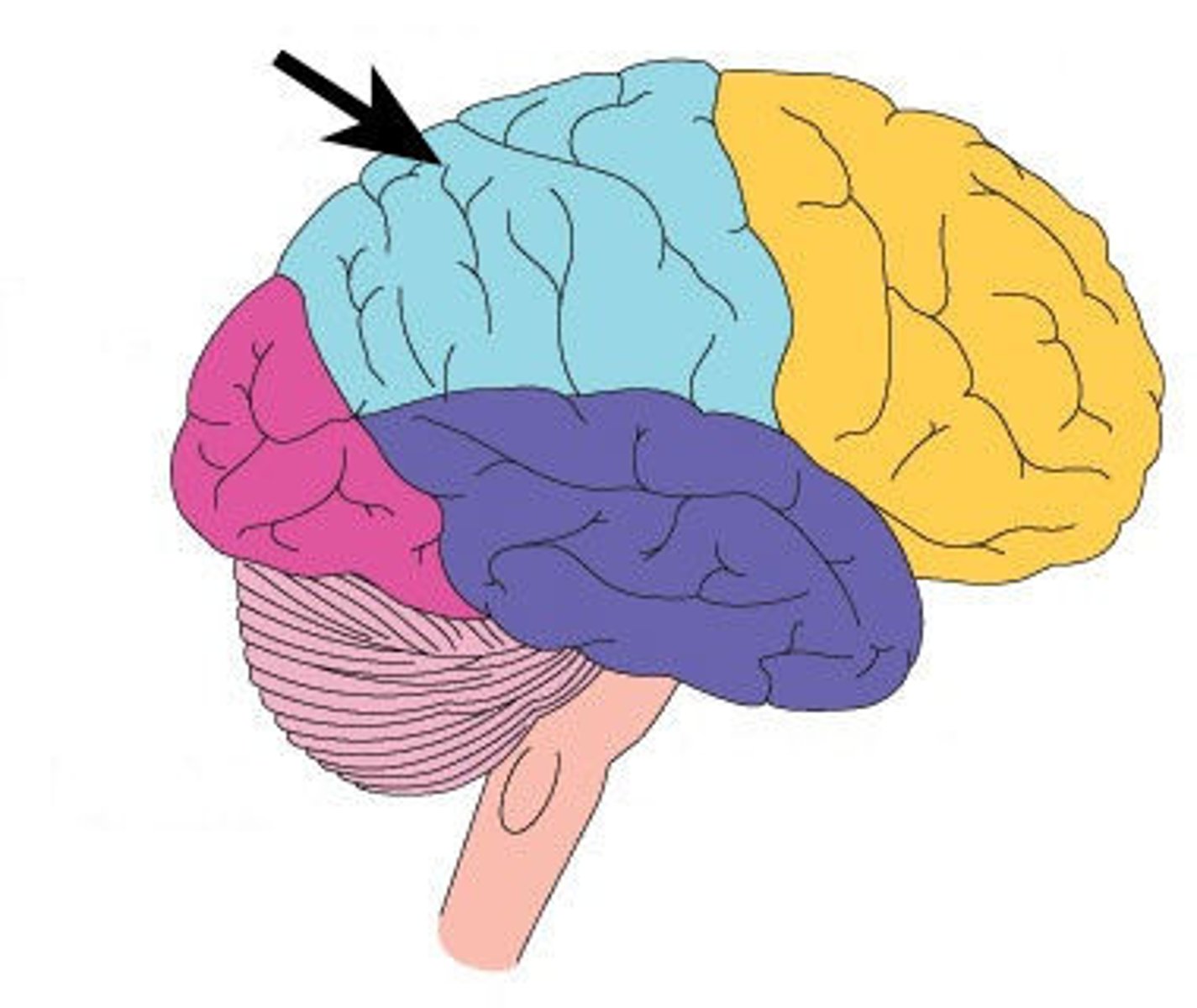
temporal lobe
This lobe regulates memory creation, memory storage, emotions, hearing,
and on the left lobe, understanding language (Wernicke's area). It is also
involved in organization and sequencing.
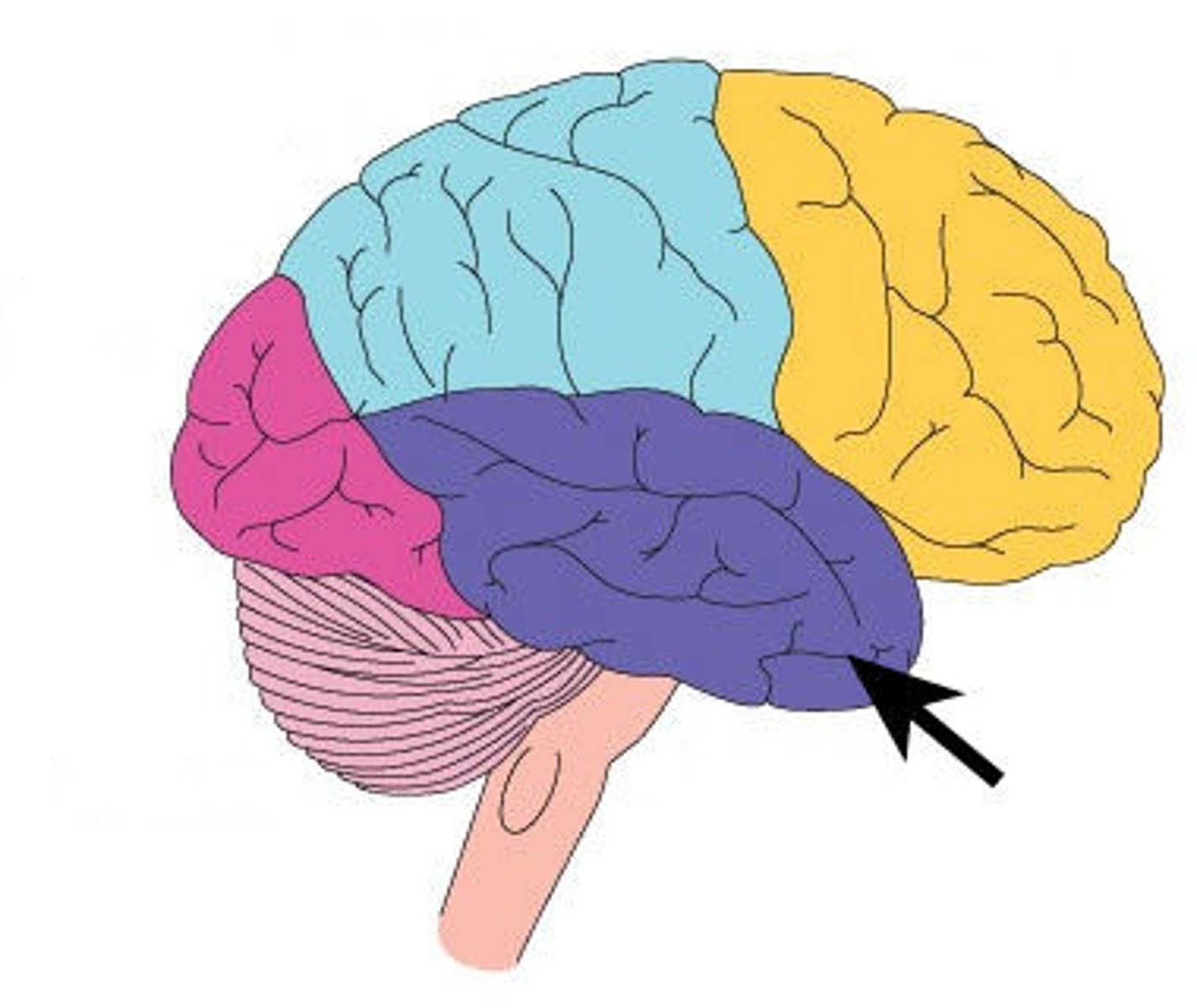
frontal lobe
This lobe evolved most recently and is the last to fully develop in young adulthood.
This lobe controls responses to complex problems through reasoning, judgement, decision making and planning. It guides appropriate behavior
and is the seat of our sense of self-awareness and personality.
